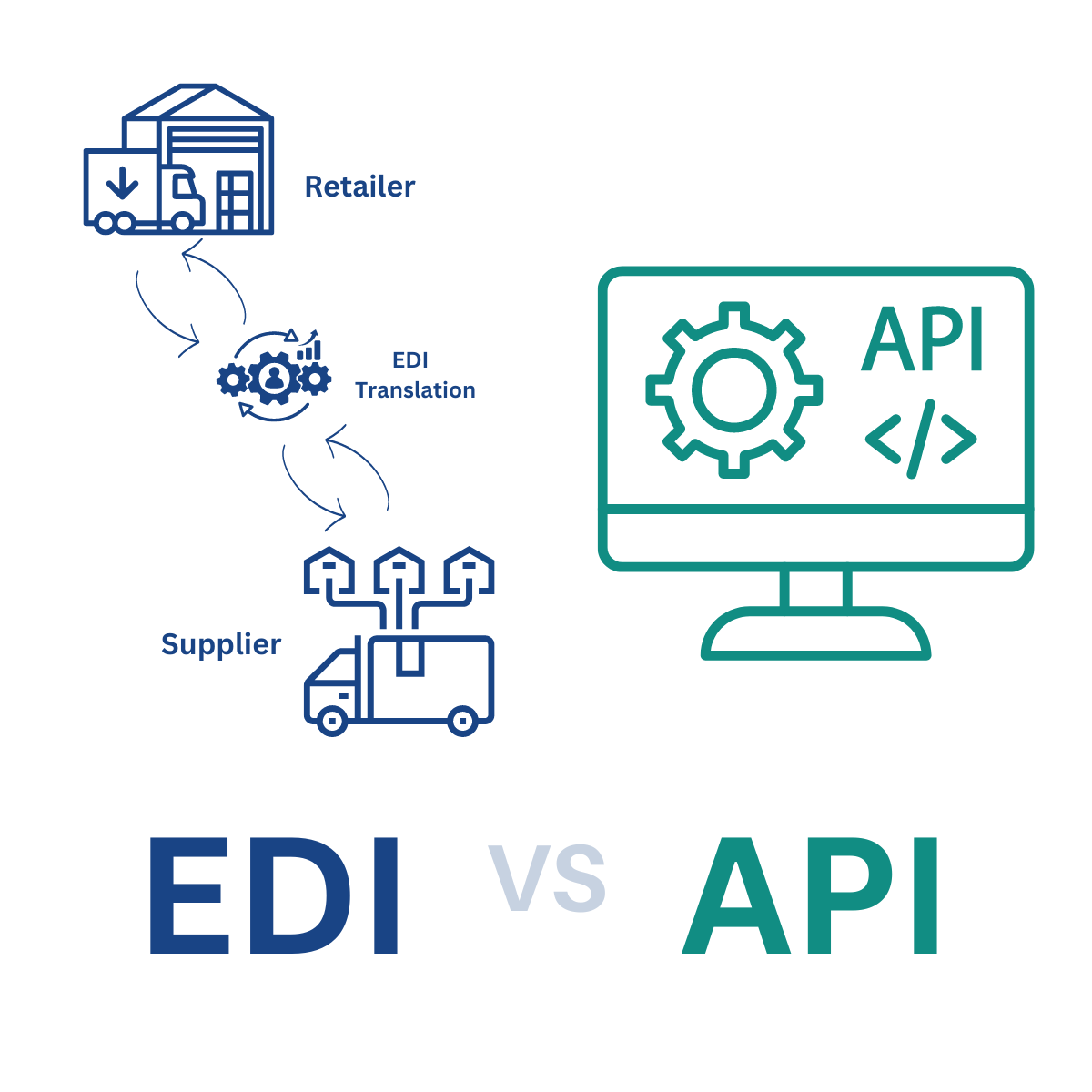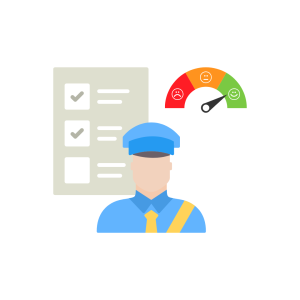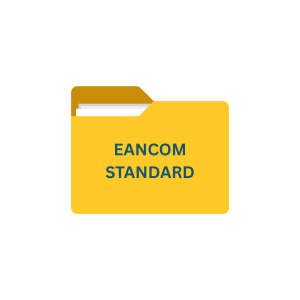Introduction to EDI and API
Two common integration methods that have gained significant popularity in recent years are Electronic Data Interchange (EDI) and Application Programming Interface (API). While both EDI and API serve the purpose of data exchange between disparate systems, they have some key differences that businesses need to understand.
Whereas EDI facilitates the exchange of structured business data among the EDI systems of trading partners, while APIs enable integration and communication between diverse software applications, facilitating real-time data exchange.
Contemporary B2B onboarding processes demand adherence to data formats such as EDI and protocols like AS2 or SFTP. However, modern IT onboarding extends beyond this, encompassing the deployment of new cloud or on-premise applications, often necessitating additional APIs. That’s why businesses today are looking for a more centralized integration platform that can use both technologies EDI and API together to enhance the overall B2B data transmission process.
Key Takeaways
- EDI (Electronic Data Interchange) and API (Application Programming Interface) are two methods for exchanging data electronically between systems.
- EDI is a structured, standardized method widely used for bulk data exchange in industries like retail and manufacturing.
- API enables real-time data transfer, offering more flexibility and faster updates than traditional EDI.
- Choosing between EDI and API depends on business needs: EDI is reliable for high-volume transactions, while APIs are ideal for dynamic, real-time applications.
- Many businesses are adopting a hybrid approach, combining EDI’s reliability with API’s real-time capabilities.
Table of Contents
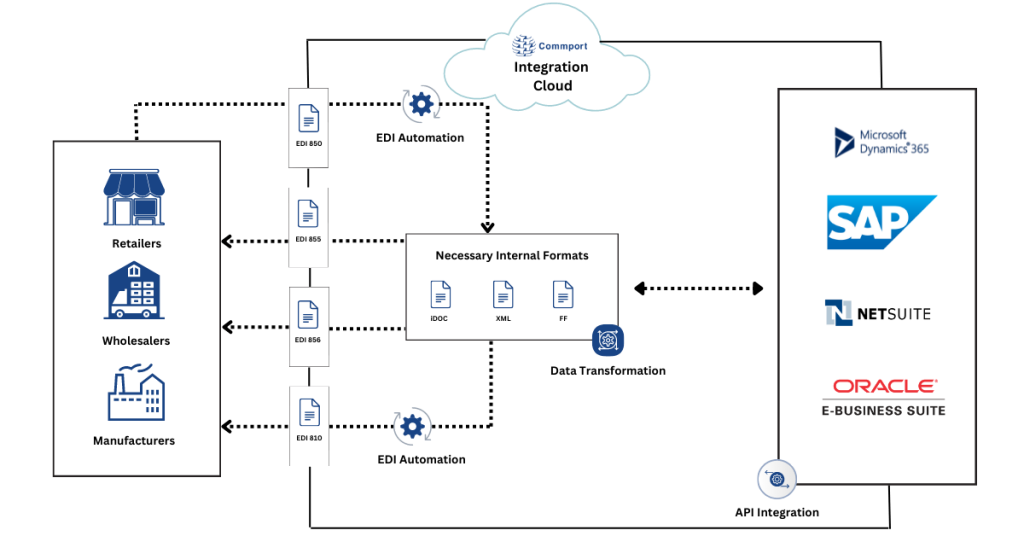
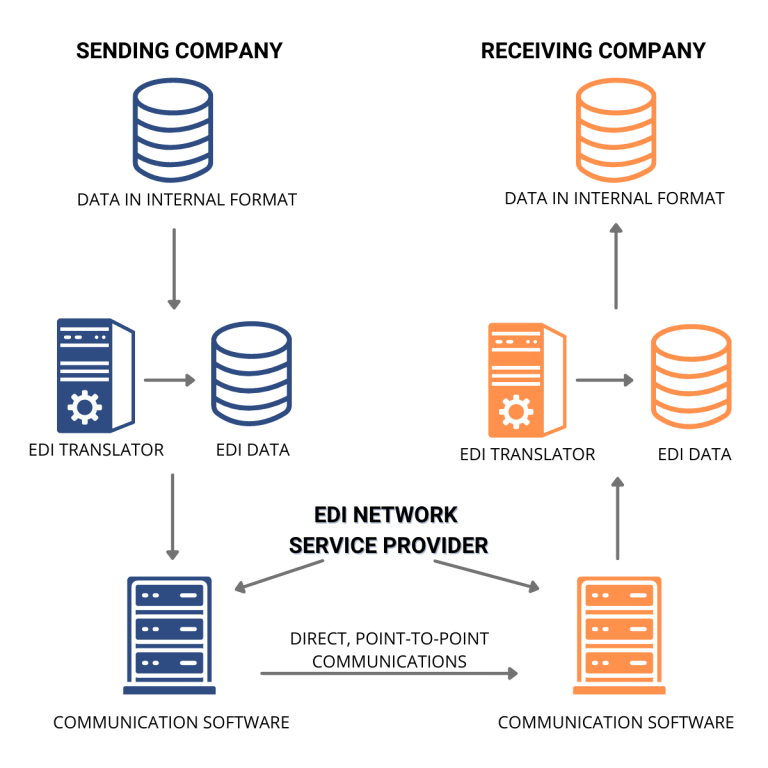
What is EDI (Electronic Data Interchange)?
EDI, or Electronic Data Interchange, is a method that enables the exchange of business documents between different computer systems. It has been in use for several decades and has proven to be a reliable and secure way of transmitting data electronically. EDI follows a standardized format, such as ANSI X12 or EDIFACT, which ensures that the data is structured and can be easily interpreted by the receiving system.
One of the main advantages of EDI is its ability to automate manual processes and reduce human error. By eliminating the need for manual data entry, businesses can save time, minimize costs, and improve accuracy. EDI is commonly used in industries such as retail, manufacturing, and healthcare to exchange purchase orders, invoices, shipping notices, and other business documents.
What is API (Application Programming Interface)?
API, or Application Programming Interface, is a set of rules and protocols that allows different software applications to communicate with each other. APIs enable seamless integration between systems, enabling them to share data and functionalities. Unlike EDI, which focuses on the exchange of structured data, APIs are more versatile and can transmit both structured and unstructured data in real-time.
APIs have gained immense popularity in the digital age due to their flexibility and ability to facilitate real-time interactions. They are widely used in various industries, such as e-commerce, finance, and social media. For example, when you book a flight ticket on a travel website, the website uses an API to communicate with the airline’s reservation system and retrieve the available flights and prices.
EDI vs API: Understanding the Key Differences
Now that we have a basic understanding of EDI and API, let’s delve into the key differences between these two integration methods.
Data Structure
EDI relies on a standardized data format, which ensures that the data is consistent and easily interpreted by the receiving system. On the other hand, APIs are more flexible and can handle both structured and unstructured data. This makes APIs suitable for real-time interactions and enables businesses to exchange a wide range of information.
Real-time vs Batch Processing
One of the primary distinctions between EDI and API is the way they handle data transmission. EDI follows a batch processing approach, where data is exchanged periodically in predefined batches. This can introduce delays in data transmission and processing. On the contrary, APIs facilitate real-time communication, allowing data to be transmitted instantly and enabling businesses to access up-to-date information.
Integration Complexity
EDI integration typically requires specialized software and expertise to set up and maintain. The process involves mapping data fields, establishing communication protocols, and ensuring compatibility between systems. Conversely, API integration is relatively simpler, as it leverages widely adopted web technologies such as REST or SOAP. APIs provide well-documented endpoints and methods, making it easier for developers to integrate systems and exchange data.
EDI (Electronic Data Interchange) | API (Application Programming Interface) |
EDI is a standardized method for exchanging business documents electronically between different computer systems. | API is a set of protocols, tools, and definitions that allow different software applications to communicate with each other. |
Requires a predefined format for data exchange, such as ANSI X12 or EDIFACT. | Offers more flexibility in data formatting, often using JSON or XML. |
Typically relies on batch processing, with scheduled transmissions of large data sets. | Supports real-time data exchange, enabling instant communication between systems. |
Transactions are usually initiated by one party and processed by the receiving party, with limited interactivity. | Allows for more interactive communication, with both parties able to initiate and respond to requests dynamically. |
Requires a dedicated EDI translator or software to interpret and process data according to EDI standards. | Requires developers to integrate APIs into their software applications to enable communication with other systems. |
Primarily used for exchanging structured business documents like purchase orders, invoices, and shipping notices. | Facilitates a wide range of interactions, from simple data retrieval to complex transactions and operations. |
EDI transactions are often exchanged through specialized communication protocols like AS2, FTP, or VAN. | APIs can use various communication protocols, including HTTP, REST, SOAP, and WebSockets. |
Implementation and setup of EDI systems can be complex and time-consuming, requiring coordination between trading partners. | Integration of APIs can be relatively faster and more straightforward, especially with well-documented APIs and development resources. |
Provides strong data security through encryption and authentication mechanisms, essential for sensitive business data. | Security measures depend on the implementation, but APIs can utilize encryption, authentication tokens, and OAuth for secure communication. |
Well-established and widely adopted in industries like manufacturing, retail, and logistics. | Gaining popularity across various industries, particularly in software development, fintech, and e-commerce. |
EDI standards evolve slowly and may lack support for newer data formats or technologies. | APIs can adapt more quickly to changing business requirements and technological advancements. |
Can be costly to implement and maintain, especially for smaller businesses without dedicated IT resources. | APIs offer scalability and cost-effectiveness, allowing businesses of all sizes to leverage modern integration solutions. |
EDI transactions are often batched and processed at regular intervals, leading to potential delays in data exchange. | APIs enable real-time data retrieval and processing, reducing latency and improving responsiveness. |
Compliance with specific EDI standards is mandatory for trading partners, ensuring consistency and interoperability. | APIs offer more flexibility in data exchange, but adherence to API documentation and standards is necessary for seamless integration. |
EDI transactions are less prone to errors since data formats are standardized and validated before transmission. | APIs may require more stringent error handling and validation procedures to ensure data integrity and reliability. |
EDI systems are well-suited for exchanging large volumes of structured data efficiently and reliably. | APIs are versatile and can handle various types of data exchanges, from simple queries to complex transactions involving multimedia content. |
EDI transactions may require manual intervention for handling exceptions or resolving discrepancies in data exchange. | APIs can automate error handling and exception management, reducing the need for manual intervention and improving efficiency. |
EDI implementations may have longer lead times for onboarding new trading partners due to setup and testing requirements. | APIs offer faster onboarding and integration processes, enabling quicker collaboration with new partners and systems. |
EDI standards are governed by organizations like ANSI and UN/EDIFACT, ensuring global compatibility and consistency. | APIs may lack standardization across industries, leading to variations in implementation and interoperability challenges. |
EDI has been a cornerstone of B2B communication for decades, providing a reliable framework for electronic commerce. | APIs represent the next evolution in B2B communication, offering greater flexibility, agility, and integration capabilities to businesses worldwide. |
EDI Integration Pros and Cons
| Pros | Cons |
|---|---|
| Standardized format: EDI follows a standardized format, ensuring consistency and compatibility between systems. | Batch processing: The batch-processing nature of EDI can cause delays in data transmission and processing. |
| Reduced manual effort: By automating data exchange, EDI eliminates the need for manual data entry, reducing errors and saving time. | Limited real-time capabilities: EDI is not well-suited for real-time interactions and is more suitable for exchanging periodic batches of data. |
| Enhanced security: EDI employs encryption and authentication protocols, ensuring secure data transmission. |
API Integration Pros and Cons
| Pros | Cons |
|---|---|
| Real-time communication: APIs enable instant data transmission, facilitating real-time interactions between systems. | Lack of standardization: Unlike EDI, APIs do not have a standardized format, which can sometimes lead to compatibility issues between systems.. |
| Versatility: APIs can handle both structured and unstructured data, making them suitable for a wide range of integration scenarios. | Security concerns: APIs require proper security measures to protect against unauthorized access and data breaches. |
| Simplified integration: With well-documented endpoints and methods, API integration is relatively easier for developers. |
EDI and API Working Together
While EDI and API differ in their approach to data exchange, they are not mutually exclusive. They can complement each other and work together to provide a comprehensive integration solution.
1. Hybrid Integration
Businesses can leverage APIs to bridge the gap between modern systems and legacy EDI infrastructure, enabling seamless data exchange between different platforms.
2. Real-Time Updates
APIs can provide real-time data updates and notifications, complementing EDI’s batch processing capabilities and ensuring timely information exchange between trading partners.
3. Enhanced Interactivity
APIs enable more interactive communication between systems, allowing for dynamic data retrieval and transaction processing alongside the structured exchanges facilitated by EDI.
4. Scalability and Flexibility
APIs offer scalability and flexibility, allowing businesses to expand their B2B network rapidly and integrate with a diverse range of partners and systems, complementing the robustness of EDI.
5. Error Handling and Exception Management
APIs can automate error handling and exception management, reducing manual intervention and improving the overall reliability and efficiency of B2B communication processes.
6. Adaptability to New Technologies
APIs can quickly adapt to emerging technologies and evolving business requirements, complementing EDI’s stability with agility and innovation in B2B communication.
7. Global Reach
EDI standards ensure global compatibility and consistency, while APIs enable businesses to extend their reach and collaborate with partners worldwide, fostering global B2B communication networks.
For example
A business can use EDI to exchange structured documents, such as purchase orders and invoices, with its trading partners. At the same time, it can leverage APIs to integrate with external systems, such as logistics providers or payment gateways, for real-time data exchange. This hybrid approach allows businesses to combine the benefits of both EDI and API, ensuring efficient and seamless integration across their entire ecosystem.
Choosing the Right Integration Method for Your Business
When deciding between EDI and API integration, it is essential to consider your business requirements, industry standards, and technical capabilities. Here are some factors to consider when choosing the right integration method:
Data requirements: Evaluate the type of data you need to exchange and whether it is structured or unstructured.
Real-time vs batch processing: Determine if real-time data exchange is critical for your business or if periodic batch processing is sufficient.
Industry standards: Research industry-specific standards and regulations that may influence your integration decision.
Technical expertise: Assess your organization’s technical capabilities and resources required for implementing and maintaining the integration solution.
By carefully evaluating these factors, you can make an informed decision and choose the integration method that best aligns with your business needs.
Implementing EDI and API in Your Systems
Implementing EDI or API integration requires careful planning and execution. Here are some steps to consider when integrating these methods into your systems:
Assess your current systems: Evaluate your existing systems and identify the data that needs to be exchanged with external partners or systems.
Define integration requirements: Determine the integration requirements, including the type of data, frequency of exchange, and security measures.
Select the right solution: Choose the appropriate software or service provider like Commport Communications that supports your chosen integration method (EDI or API).
Develop integration workflows: Map the data fields between systems, define communication protocols, and establish error-handling mechanisms.
Test and validate: Conduct thorough testing to ensure seamless data exchange and validate the accuracy of the integrated systems.
Monitor and maintain: Regularly monitor the integration process, address any issues promptly, and keep the integration solution up to date.
By following these steps and leveraging the expertise of integration specialists, you can successfully implement EDI or API integration and optimize your business processes.
EDI vs API: Industry Use Cases and Examples
Now let’s explore how EDI and API are used in different industries and examine some real-world examples.
Retail Industry
In the retail industry, EDI is commonly used for automating the exchange of purchase orders, invoices, and shipping notices between retailers and suppliers. This streamlines the procurement process, reduces errors, and improves order fulfillment efficiency. APIs, on the other hand, enable retailers to integrate their e-commerce platforms with payment gateways, logistics providers, and inventory management systems in real time. This allows for seamless order processing, inventory updates, and payment processing.
Manufacturing Industry
In the manufacturing industry, EDI plays a crucial role in supply chain management by enabling the exchange of production forecasts, delivery schedules, and shipping instructions between manufacturers and suppliers. This improves production planning, reduces lead times, and enhances collaboration between trading partners. APIs are used to integrate manufacturing execution systems (MES) with enterprise resource planning (ERP) systems, enabling real-time visibility into production processes, inventory levels, and order status.
Healthcare Industry
In the healthcare industry, EDI is widely used for claims processing, eligibility verification, and electronic remittance advice (ERA). This automates administrative tasks, reduces paperwork, and speeds up the reimbursement process. APIs are utilized to integrate electronic health record (EHR) systems with laboratory information systems, pharmacy systems, and telemedicine platforms. This ensures seamless data exchange, improves care coordination, and enables interoperability between healthcare providers.
These are just a few examples of how EDI and API are leveraged in different industries. The key takeaway is that both integration methods have their unique strengths and applications, and businesses need to assess their specific needs before deciding which method to adopt.
Conclusion
Understanding the key differences between EDI and API is crucial for businesses looking to optimize their data exchange processes. While EDI offers structured data transmission and batch processing capabilities, APIs enable real-time interactions and flexibility in handling different data types. By leveraging the strengths of both integration methods, businesses can achieve seamless connectivity across their systems, enhance collaboration with trading partners, and accelerate their digital transformation journey.
Whether you choose EDI, API, or a combination of both, it is important to align your integration strategy with your business goals, technical capabilities, and industry standards. By doing so, you can unlock the potential of EDI and API and harness their power to drive business success.
Need Help? Download: EDI Buyers Guide
Unlock the full potential of your supply chain with our comprehensive EDI Buyer's Guide — your first step towards seamless, efficient, and error-free transactions
Commport EDI Solutions
Frequently Asked Questions
EDI (Electronic Data Interchange) is a standardized method for exchanging business documents electronically, typically using predefined formats and protocols. APIs (Application Programming Interfaces), on the other hand, facilitate communication between different software applications by defining how they can interact with each other programmatically.
EDI has been traditionally prevalent in industries like manufacturing, retail, and logistics, where structured data exchange is critical for operations. APIs are gaining popularity across various sectors, including software development, fintech, and e-commerce, due to their flexibility and real-time capabilities.
While APIs offer greater flexibility and agility compared to EDI, they are not necessarily replacing it entirely. Instead, APIs complement EDI by providing additional functionalities, such as real-time data exchange and enhanced interactivity, while still leveraging the stability and reliability of EDI for structured document exchanges.
Both EDI and APIs offer security measures to protect sensitive business data during transmission. EDI transactions are secured through encryption and authentication mechanisms, while APIs can utilize various protocols and techniques such as encryption, authentication tokens, and OAuth for secure communication.
For small businesses with limited IT resources, APIs may offer a more accessible and cost-effective solution compared to EDI. APIs are easier to integrate and maintain, and they provide scalability and flexibility without requiring significant upfront investment in infrastructure. However, the choice between EDI and APIs ultimately depends on the specific needs and requirements of the business.

